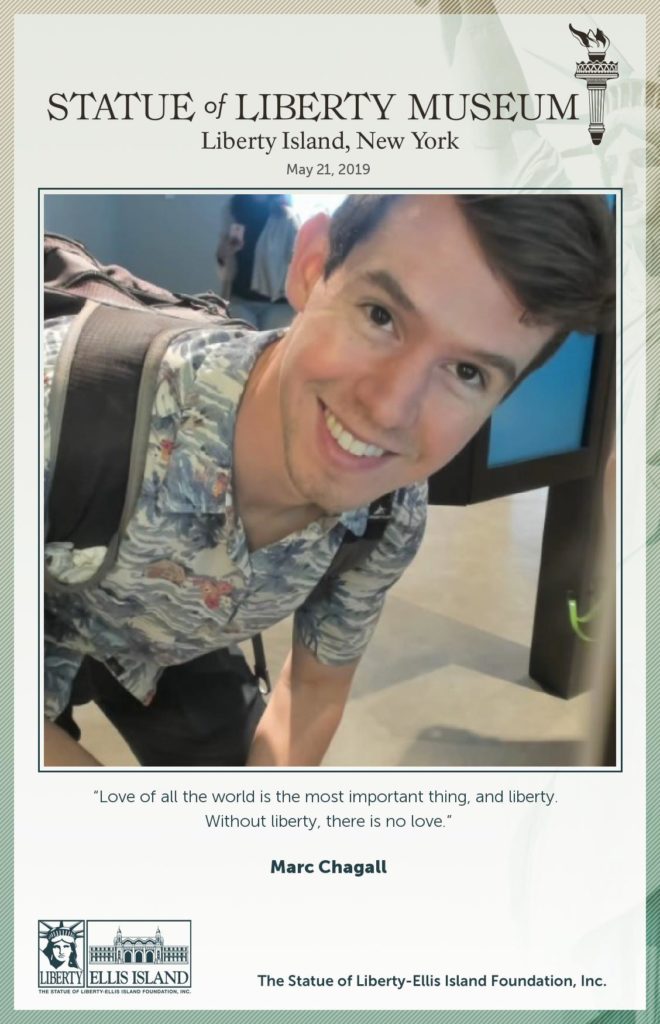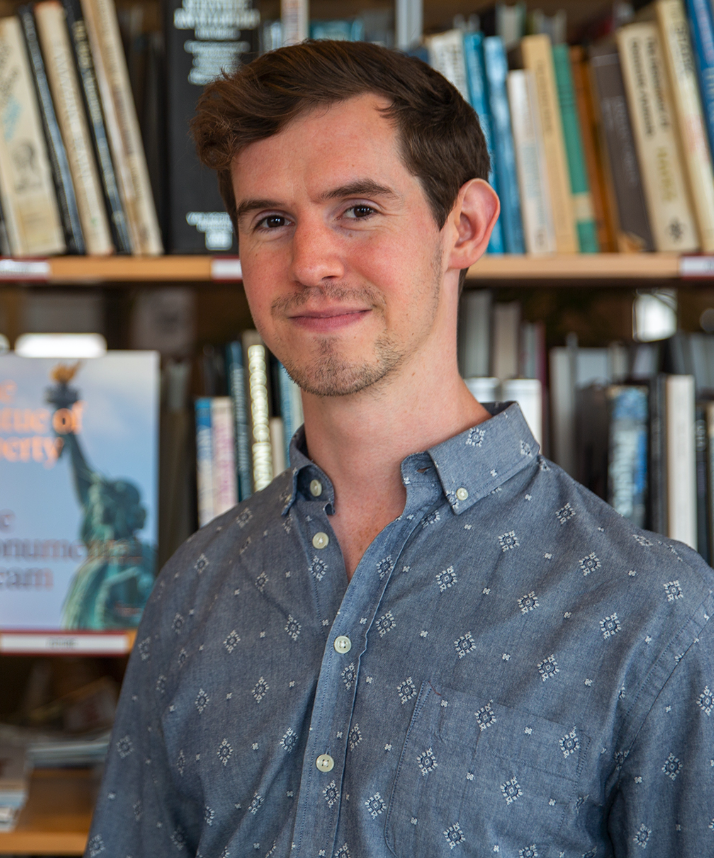Lads of Liberty: Charles Deluga, Designer & AV Technologist at ESI Design
Posted December 17, 2019
In May 2019, the new Statue of Liberty Museum opened on Liberty Island with experience and exhibits by ESI Design. The new museum is part of a $100 million Liberty Island-wide beautification effort that is funded by our clients, The Statue of Liberty-Ellis Island Foundation.
To celebrate we’re sharing the stories of some of the talented people who have worked for over five years to bring this world-class museum from concept to completion.
In this edition, you’ll hear from Charles Deluga, a Designer & AV Technologist at ESI Design, who worked on the experience and exhibit design for the museum. Charles oversaw the production and installation of all of the museum’s audiovisual equipment.

Name: Charles Deluga
Job Title: Designer & AV Technologist, ESI Design
Years of Experience: 6
Age: 29
Nationality: United States
Languages Spoken: English
Education: Bachelors degree in Economics & Psychology from the University of Virginia, Masters in Music Technology from New York University
What was your first encounter with the Statue of Liberty?
Charles Deluga, Designer & AV Technologist: The first time I saw the Statue was when I took a cruise around New York Harbor a few years ago. I remember feeling a lot more patriotic than I expected. The first time I actually went to Liberty Island was when I visited the museum while it was under construction. It was basically a shell of HVAC inside the museum then, but I got to walk around and see the statue.
What was your role on the project? What did that mean for you day-to-day?
CD: I was the lead systems designer for museum’s experience and exhibits, so I worked with the systems integrators and fabricator to detail the audiovisual system and review and refine those drawings. I also oversaw production and installation of all of the equipment to make sure it was installed in a way that would support ESI Design’s design intent for the museum.

You just opened a new museum for the Statue of Liberty — how does that feel? What does that mean to you?
CD: I am really happy that the Statue of Liberty Museum came out the way that it did. It took so many hours from so many people to bring the museum into existence, and I’m glad that so many people are able to enjoy it. It has a great message, and I’m glad that’s finally open and out in the world.
Why is having a museum dedicated to the Statue of Liberty important?
CD: Most people don’t know the history or the story behind the Statue. I think they know generally what the Statue represents, but having a museum gives people a reason to think about it in more depth. When people think more deeply about the Statue and the idea of liberty, they can bring those ideas out into the world and share them.
After working on this project, has your concept of liberty evolved?
CD: One of the big ideas in the museum is that liberty is a contested ideal — something that’s always being fought for all over the world. My initial idea of it was a static concept of freedom, but it is different for everyone.
What were the steps in your journey to this iconic project?
CD: I went to grad school at NYU for music technology, and during that time I was learning about audio. Through some other classes I started getting into visual and display technologies. I did an architectural installation at MoMA PS1 as part of their summer concert series. Through that, I got a job at an AV integration firm installing AV equipment. Then, through that I got a job at ESI Design since I already had experience with the process of AV systems installation. The Statue of Liberty Museum was the first project I was put on when I joined ESI Design and I worked on it for three years.
Since you started your career, what’s the biggest change you have seen in the world of design?
CD: Interactive and display technologies are more accessible and affordable now, so you don’t have to have an enormous budget to have access to this technology anymore. You can do really interesting things in an affordable way. It’s so much easier to say, “I want to do that, and I actually can.”

What advice would you give to your younger self starting a career in design?
CD: Keep doing what you’re doing. I’m happy with the way things are going now. I don’t know if I would have changed it too much. Although as an undergrad, I studied economics and psychology because I thought that was the way I would have a clear path to a job. But I didn’t realize how accessible technology could be — you don’t need to be a computer programmer to write code. You only need enough experience to figure out what you need to learn and how, then you can branch out from there. It is really possible to do a lot of things I didn’t know I would be able to do.
If you were giving a tour of the new museum, what would be your top highlight?
CD: Sketches and The Statue in Pop Culture are two interactive exhibits in the museum that might get overlooked, but they let visitors dive deeper into the material and historical artifacts of Bartholdi’s original sketches for the statue, and also the vast array of posters and pop culture materials that feature the Statue.


Join The Conversation